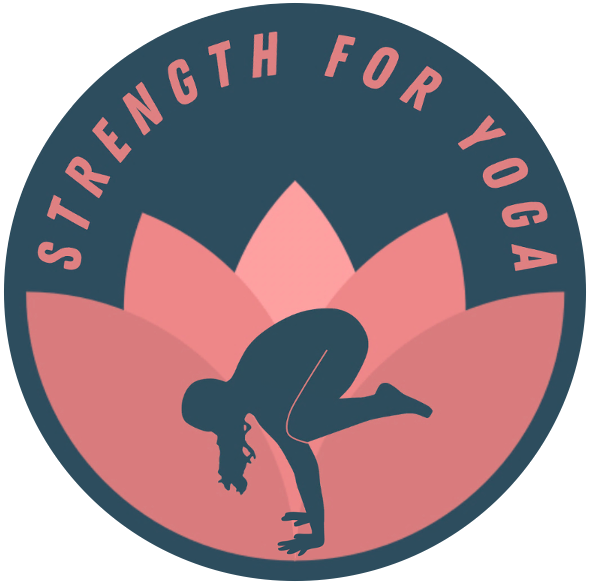Should You Lift Weights Slowly or Quickly?
This blog post was first sent to the Strength for Yoga email list as an email newsletter. Sign up for the SFY email newsletter here!
Have you ever wondered about the best speed to lift and lower your weights during strength training?
If so, you're not alone! One of our Remote Group Training members recently asked us this:
"I’ve been experimenting with lifting slowly, and/or pausing at challenge points and just feeling the work there for a few seconds. However, I’m unable to do as many reps when I lift slowly like this. Is it better to lift especially slowly like this, or to just lift at a normal speed without thinking about it?"
Great question, right? 😃 Here's our research-based answer!
Slow movement during strength training can sometimes be beneficial, but it’s important to keep a few key considerations in mind.
Let's dive into the geeky details! 🤓 First, some essential background info:
In exercise science, the speed at which we move during strength training is called tempo.
Research on tempo differentiates its effects on strength versus hypertrophy.
A quick strength science primer:
Strength refers to the maximum force we can produce – basically, how heavy of a weight we can lift.
Hypertrophy, on the other hand, refers to muscle size.
While strength training can improve both strength and muscle size, these are related but distinct outcomes.
CONCENTRIC VS. ECCENTRIC MOVEMENT PHASES
Another important point for this discussion is the distinction between the two phases of a strength training exercise: the concentric and eccentric phases.
The concentric phase refers to the lifting portion of the movement, while the eccentric phase is the lowering phase.
For example, as we lower down into a squat, we move through the eccentric phase, and as we lift back up to standing, we move through the concentric phase.
Now that we've covered our foundational concepts, let's explore how this all ties into tempo – the speed at which we perform our movements during strength training.
First of all, the research on tempo is still evolving; it's far from conclusive at this point. ☝️ But here's what the research we do have on this topic suggests!
FOR A GOAL OF STRENGTH
Research suggests that for strength, one should lower the weight in a controlled manner (eccentric phase) and lift the weight in an explosive manner, as quickly as possible (concentric phase).
Controlling the weight during the eccentric phase ensures that our muscles stay actively engaged and that we're not simply letting gravity do the work by 'dropping' the weight. This doesn't mean we need to deliberately slow the tempo to an exaggerated degree – it simply means lowering the weight with control, without thinking about it too much beyond that.
And lifting the weight as quickly as possible during the concentric phase seems to allow for better neural adaptations, which can lead to greater strength gains (Wilk et al., 2021). This is true even if the weight doesn't actually move that fast (because it's heavy). It's the intention to move it fast that matters! 🤯
FOR A GOAL OF HYPERTROPHY (MUSCLE GROWTH)
When it comes to hypertrophy, it appears that we have greater flexibility with our tempo.
While a faster concentric (lifting) phase is still recommended, the eccentric (lowering) phase can range from a simple controlled descent to a deliberately slow movement – lasting up to 8 seconds!
Research suggests that muscle growth is similar across eccentric tempos within this range. However, excessively prolonging the eccentric phase beyond 8 seconds may actually hinder muscle growth and could be counterproductive (Schoenfeld et al., 2015).
WHAT ABOUT A GOAL OF MIND-MUSCLE CONNECTION?
As yoga practitioners, we're especially attuned to mindfulness in movement. Feeling connected to our muscles as they work is a natural extension of this awareness.
If cultivating a mind-muscle connection is a goal during strength training, slowing down our movements can enhance our ability to feel and engage the target muscles.
This technique can be applied during the concentric (lifting) or eccentric (lowering) phase – or both! However, if building strength or muscle growth is also a goal, research suggests intentionally slowing down only the eccentric (not concentric) phase, and keeping it under 8 seconds, is most effective.
It’s important to note that this advice on tempo is specific to strength training. In a yoga practice, the approach to tempo is different. Since yoga isn't designed for optimal strength or muscle growth, moving slowly through both the concentric and eccentric phases can instead support mindfulness, body awareness, and a deeper connection to the practice.
WHAT ABOUT PAUSES?
Adding a pause during a strength training exercise, particularly at the most challenging point in the exercise (often referred to in the strength world as the "sticking point"), can be a helpful training technique.
For example, adding a pause at the bottom of a squat (say 1-5 seconds) forces our muscles to work in the most challenging point of the movement, which can help us build strength in that position and ultimately develop a stronger overall squat.
Here's an example of a paused squat – note the prolonged hold in the bottom position:
This can be a great technique to employ from time to time in our strength practice.
WHEN YOU'RE WORKING WITH LIMITED EQUIPMENT AT HOME
Working out from home often means limited access to a full selection of weights.
And over time, as we build strength, it’s common to "outgrow" the equipment we have on hand.
(BTW: whenever our Remote Group Training members mention that they're getting too strong for their weights, we of course offer them our best training advice, but we also remind them that this is a good problem to have hehe! 😉)
The most straightforward solution to getting too strong for your weights is to invest in heavier weights to continue challenging your body with increased load. However, this isn’t always practical or realistic for everyone.
When heavier weights aren’t available, incorporating intentionally slow eccentric phases or adding pauses to your strength exercises can effectively make lighter weights feel more challenging. 💪
(In our Remote Group Training program, we understand that many members work with a limited selection of weights at home. That’s why we sometimes include pause-based exercises and extended eccentric options in our programming – helping you make the most of your workouts, even without access to heavier equipment!)
KEY TAKEAWAYS ON LIFTING TEMPO
In summary, the speed at which you lift and lower weights – i.e., your tempo – can play a significant role in your strength training results, depending on your goals:
For strength, control the eccentric phase and lift explosively during the concentric phase.
For hypertrophy, you have more flexibility but should keep eccentric movements under 8 seconds.
Mind-muscle connection and pause techniques can also be valuable tools, especially when equipment is limited.
Remember, tempo is just one piece of the puzzle – finding what works best for you and your practice is key!
👉 Note: While these recommendations are based on current research, the science of tempo in strength training is still evolving. Future studies will provide clearer insights, so stay curious and adaptable in your approach!
References:
Schoenfeld BJ, Ogborn DI, Krieger JW. Effect of Repetition Duration During Resistance Training on Muscle Hypertrophy: A Systematic Review and Meta-Analysis. Sports Med. 2015;45:577-585. doi:10.1007/s40279-015-0304-0
Wilk M, Zajac A, Tufano JJ. The Influence of Movement Tempo During Resistance Training on Muscular Strength and Hypertrophy Responses: A Review. Sports Med. 2021;51:1629-1650. doi:10.1007/s40279-021-01465-2
YOU MIGHT ALSO LIKE…







